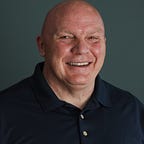When Are You Ready to Become a Philanthropist?
The best time to plant a tree was twenty years ago. The second best time is now. -Chinese Proverb
A land administrator in Africa went to inspect a row of giant cedar trees that were uprooted and destroyed in a severe storm. When he arrived he told the foreman, “You will have to plant some cedar trees here.” The foreman replied, “It takes 2,000 years to grow cedars of the size these were. They don’t even bear cones until they’re 50 years old.” “Then,” said the administrator, “We must plant them at once.”
This story was shared by Spencer W. Kimball in 1975. If those trees were in fact planted at that time, those cedars are now of a moderate size and will be bearing cones in about six years from this writing.
Philanthropy Expert, Mary Maxwell
Mary Maxwell (Gates) went to Roosevelt High School in Seattle the 1940’s. She was notably a generous and giving person. After graduating from the University of Washington in 1950 she became a teacher. Her husband’s law practice flourished after he graduated from UW.
Mary became very involved in many community organizations, including the United Way, becoming president of the local chapter. She was appointed to the national board in 1980, then in 1983 became the first woman to lead the organization. Along with serving many other civic and charitable organizations, she served on various boards of prominent companies.
In 1980 she was working alongside fellow United Way board member, John Opel, chairman of IBM. As it happened, a short time after meeting Opel, IBM hired a small software company to develop their first PC operating system. That small company, Microsoft, was co-founded by Paul Allen and Mary’s son, Bill Gates.
Philanthropists, Bill and Melinda Gates
Six years later, Mary Maxwell Gates’ son was a billionaire. At that time, in the 1980’s, I remember hearing news media criticism of Bill for being so wealthy but, from their perspective, not practicing philanthropy. Without any background information myself, I considered the superficial criticism as sensationalist. In his defense I rightfully assumed that he had his hands full running an exponentially growing company, a company that was, in a very real way, changing the world. I briefly thought that maybe he had not grown up in an environment where charitable giving was not taught or was not a tradition. That seemed unlikely. As we now know, his mother was a master at philanthropy.
I heard, again from news media, that Bill’s PR staff was encouraging him to become a philanthropist to improve his public image. Whether or not that is the case, his very qualified and role model mother was a prominent and defining influence. According to Madeline Stone of Business Insider, at one point he told his mom, “I’m just trying to run my company.”
Six months before Mary’s early death she had written a letter to Bill’s finance, Melinda Ann French, which included the phrase, “From those to whom much is given, much is expected.” His first major donation was, understandably, to the United Way.
He and his wife later founded the Bill and Melinda Gates Foundation and are easily recognized among the top most influential and effective philanthropists in the world. Mary’s example and teaching continue to bless the world as Bill and Melinda encourage other extraordinarily successful people to join them.
Philanthropy Litmus Test, How to Know if You’re a Philanthropist
Have you ever dropped a can of food in a donation bin? -participated in a go-fund-me campaign, served others following a disaster? -helped someone get their car out of a snow bank? -provided a meal? -or Have you ever donated blood to the Red Cross? I’m doing that tomorrow.
The fact is, you already are a philanthropist. That is, if you at all practice the 1828 Webster definition of ‘philanthropy.’ “the love of mankind; benevolence towards the whole human family; universal good will.”
The question for each of us might be, “How can I become a better philanthropist?” The next question is, “When should I start?”
When to Start: Jon Huntsman Sr, and his wife Karen
As a child growing up in poverty in Southern Idaho, Jon Huntsman, Sr. sold newspapers and picked up odd jobs mowing lawns and cleaning stores. He counted his donations to his church in pennies. In the late 1950’s Jon Huntsman, Sr. had a real job, working for $320/month.
The Huntsman’s continued giving support to many organizations and responding to natural disasters such as a major earthquake in Armenia. In 1992, Jon Huntsman, Sr. had his first bout with cancer. His mother, stepmother and father had all died from cancer. He refocused his life’s work as he created the Huntsman Cancer Institute.
At an informal gathering I listened as Huntsman explained that he was a philanthropist before he became wealthy. After marrying Karen Haight in 1959, they sat down working on their budget of about $400/month. They took 10% off the top to donate to church. They studied a list of other charities to decide which would be worthy stewards of their next 10%. You don’t have to wait until you’re wealthy to become a philanthropist.
